-
Atomhybrid Materials Unit
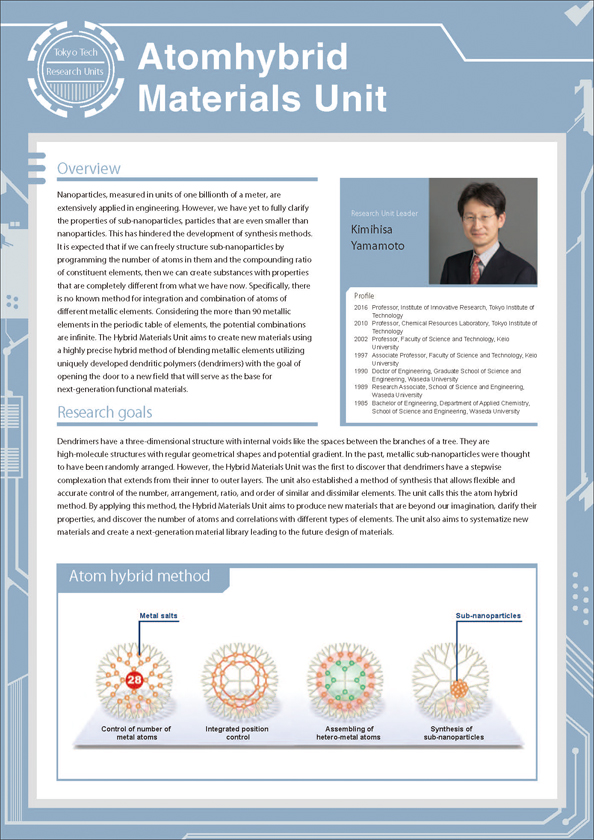
In this unit, we take an initiative in creating subnanosized alloy particles with a fractional atomicity by making full use of the precision metal assembling method. The precision subnanosized alloy particles are classified as a new substance which will open up a new frontier in the field of chemistry.
-
Biointerfaces Unit
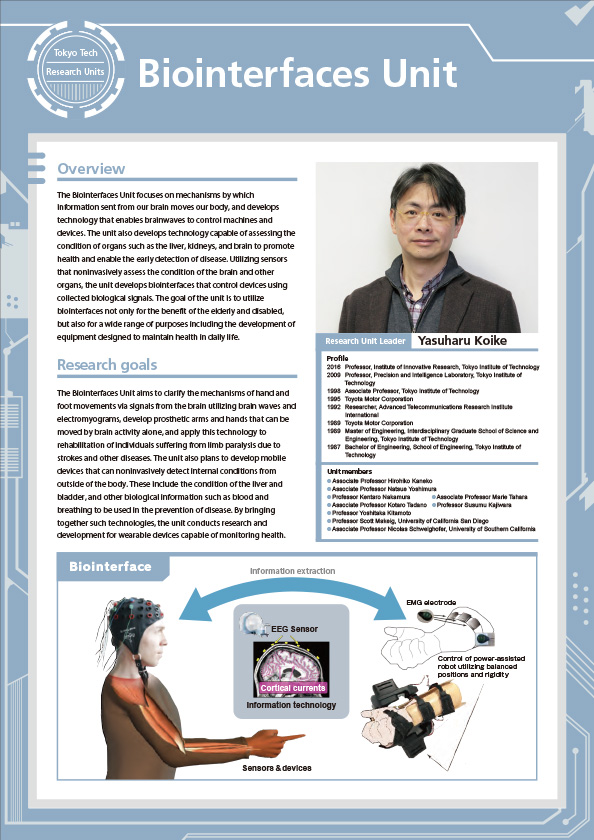
This research unit exploits a flexible organizational structure to carry out leading-edge medical and health technology research for creating a rich and comfortable super-aged society. Domestic researchers in different fields work with counterparts abroad to find solutions required for realizing this goal.
-
Nanospace Catalysis Unit
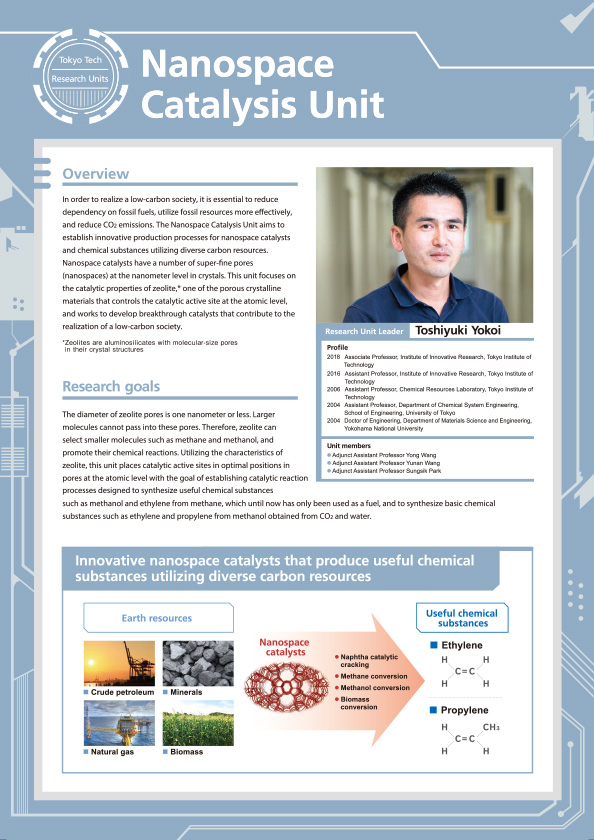
“Nanospace Catalysis Unit” focuses on nanospace materials such as zeolite and mesoporous materials, and tackle a control of structure of nanospace and its functionalization. This research unit aims to create nanospace catalyst that can make efficient use of diverse resources on the planet and that can contribute to the development of green production of chemical feedstocks and value-added chemicals.
-
WOW Alliance Heterogeneous and Functional Integration Unit
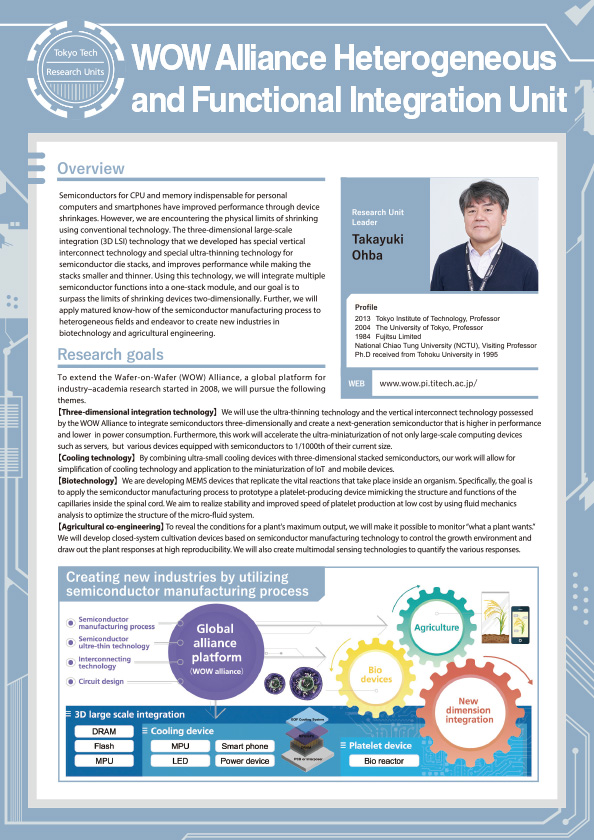
Semiconductors for CPU and memory indispensable for personal computers and smartphones have improved performance through device shrinkages. However, we are encountering the physical limits of shrinking using conventional technology. The three-dimensional large-scale integration (3D LSI) technology that we developed has special vertical interconnect technology and special ultra-thinning technology for semiconductor die stacks, and improves performance while making the stacks smaller and thinner. Using this technology, we will integrate multiple semiconductor functions into a one-stack module, and our goal is to surpass the limits of shrinking devices two-dimensionally. Further, we will apply matured know-how of the semiconductor manufacturing process to heterogeneous fields and endeavor to create new industries in biotechnology and agricultural engineering.
Laboratory List
Leaflet
WOW Alliance Heterogeneous and Functional Integration Unit -
AI Computing Research Unit
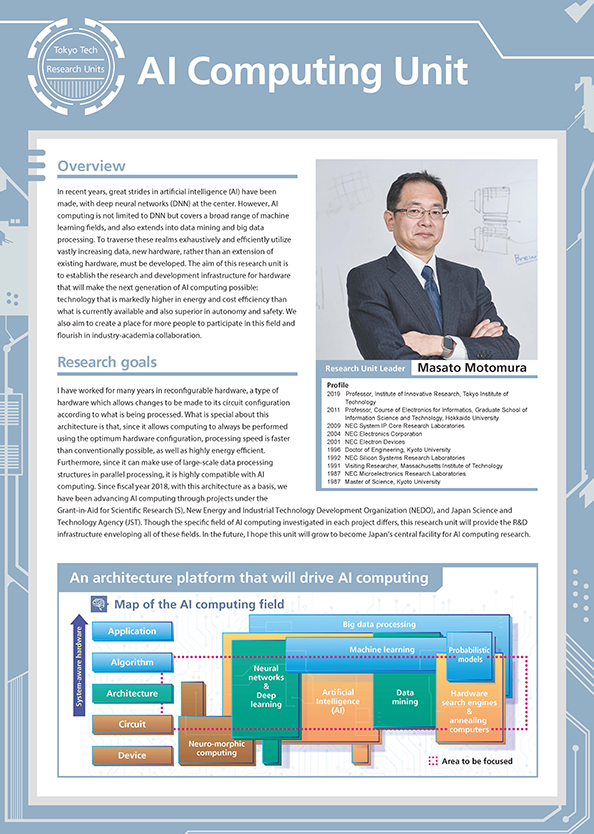
In recent years, great strides in articial intelligence (AI) have been made, with deep neural networks (DNN) at the center. However, AI computing is not limited to DNN but covers a broad range of machine learning elds, and also extends into data mining and big data processing. To traverse these realms exhaustively and eciently utilize vastly increasing data, new hardware, rather than an extension of existing hardware, must be developed. The aim of this research unit is to establish the research and development infrastructure for hardware that will make the next generation of AI computing possible: technology that is markedly higher in energy and cost eciency than what is currently available and also superior in autonomy and safety. We also aim to create a place for more people to participate in this eld and ourish in industry-academia collaboration.
-
Homeostatic Mechanism Research Unit
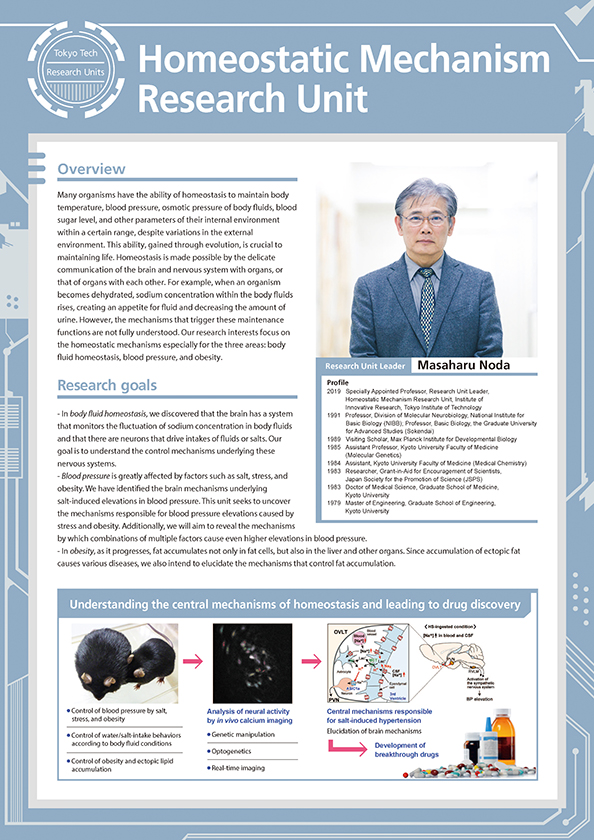
Many organisms have the ability of homeostasis to maintain body temperature, blood pressure, osmotic pressure of body fluids, blood sugar level, and other parameters of their internal environment within a certain range, despite variations in the external environment. This ability, gained through evolution, is crucial to maintaining life. Homeostasis is made possible by the delicate communication of the brain and nervous system with organs, or that of organs with each other. For example, when an organism becomes dehydrated, sodium concentration within the body fluids rises, creating an appetite for fluid and decreasing the amount of urine. However, the mechanisms that trigger these maintenance functions are not fully understood. Our research interests focus on the homeostatic mechanisms especially for the three areas: body fluid homeostasis, blood pressure, and obesity.
-
Fukushima Reconstruction and Revitalization Unit
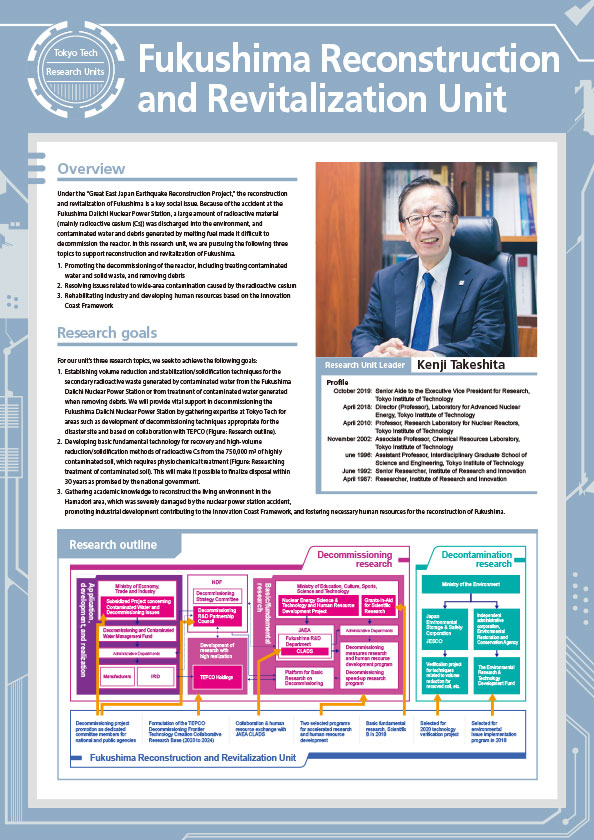
The Fukushima-Daiichi nuclear power plant accident in 2011 resulted in radioactive material being released from the damaged facility, thereby polluting the surrounding environment and seriously damaging public confidence in the safety of nuclear power. This research unit is developing fundamental technology for environmental restoration and for promoting the decommissioning of reactors, with the goal of early recovery for Fukushima following the unprecedented incident.
Laboratory List
Leaflet
Fukushima Reconstruction and Revitalization Unit -
Nano Sensing Research Unit
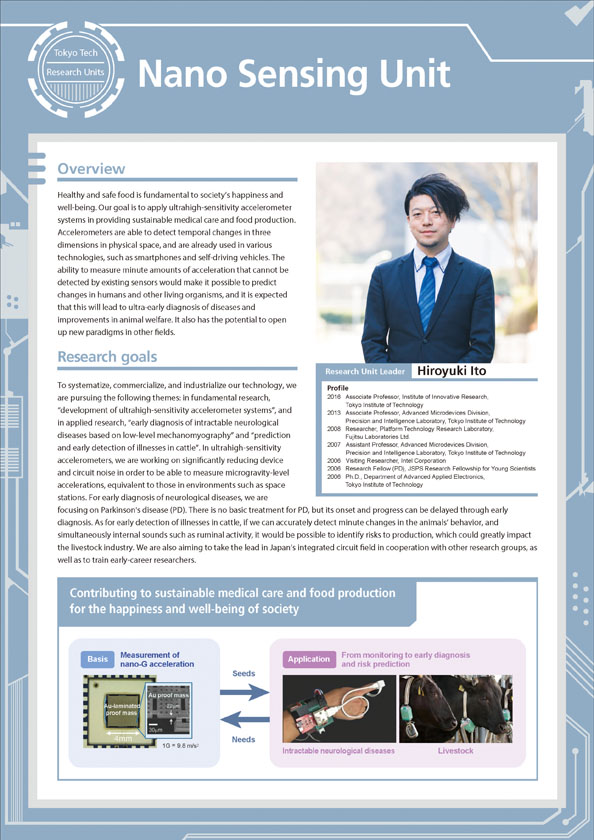
Healthy and safe food is fundamental to society’s happiness and well-being. Our goal is to apply ultrahigh-sensitivity accelerometer systems in providing sustainable medical care and food production.
-
Quantum Navigation Unit
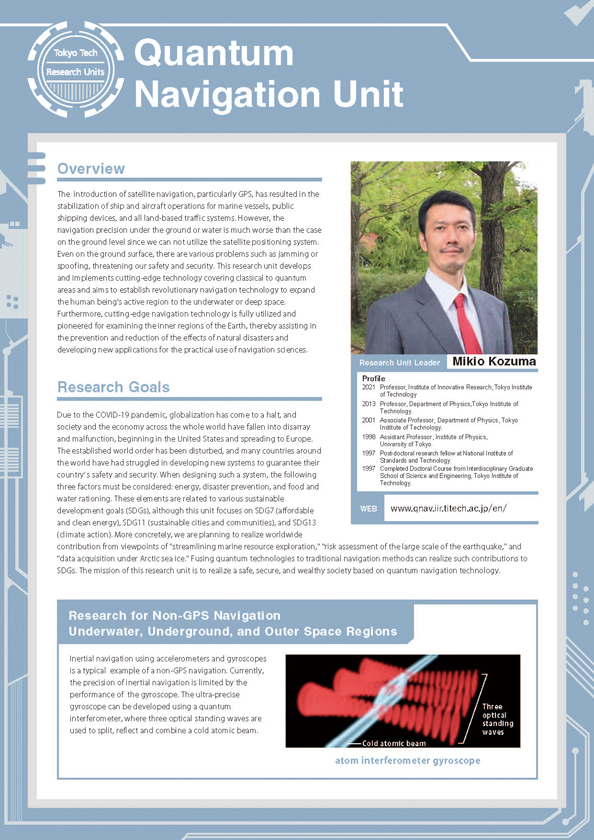
This research unit develops and implements cutting-edge technologies covering classical to quantum areas and aims to establish revolutionary ultra-precise inertial navigation. We also apply such novel navigation technology for diagnosing the inside of the earth and realize disaster defense and mitigation.
-
Biomedical AI Unit
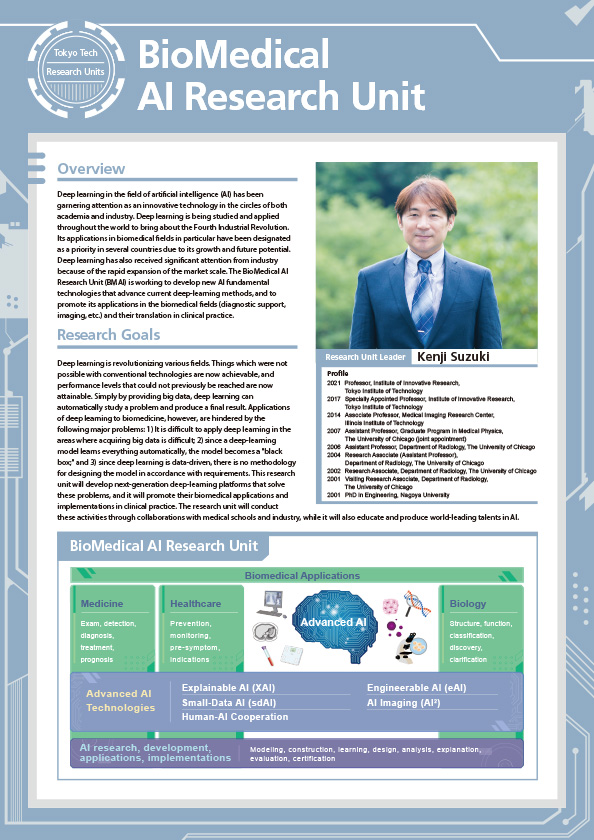
Deep learning in the field of artificial intelligence (AI) has been garnering attention as an innovative technology in the circles of both academia and industry. Deep learning is being studied and applied throughout the world to bring about the Fourth Industrial Revolution. Its applications in biomedical fields in particular have been designated as a priority in several countries due to its growth and future potential. Deep learning has also received significant attention from industry because of the rapid expansion of the market scale. The BioMedical AI Research Unit (BMAI) is working to develop new AI fundamental technologies that advance current deep-learning methods, and to promote its applications in the biomedical fields (diagnostic support, imaging, etc.) and their translation in clinical practice.
Laboratory List
Leaflet
Biomedical AI Unit -
VCSEL Photonics Unit
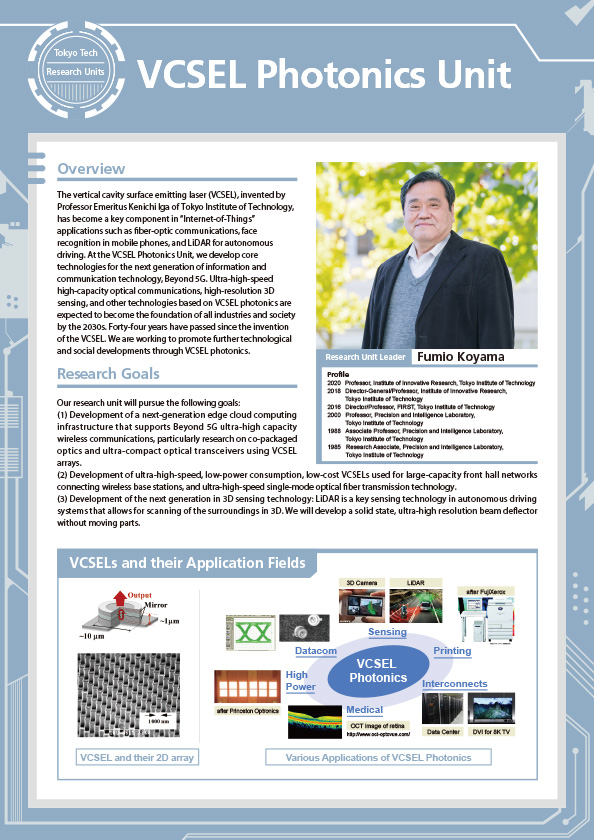
At the VCSEL Photonics Unit, we develop core technologies for the next generation of information and communication technology, Beyond 5G. Ultra-high-speed high-capacity optical communications, high-resolution 3D sensing, and other technologies based on VCSEL photonics are expected to become the foundation of all industries and society by the 2030s.Forty-four years have passed since the invention of the VCSEL. We are working to promote further technological and social developments through VCSEL photonics.
Laboratory List
Leaflet
VCSEL Photonics Unit -
Integrated Green-niX+ Research Unit
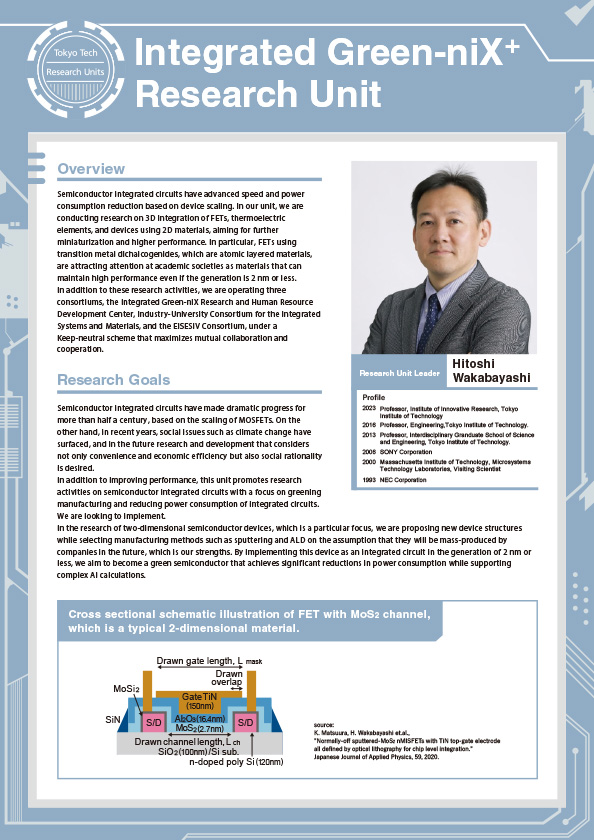
Semiconductor integrated circuits have advanced speed and power consumption reduction based on device scaling. In our unit, we are conducting research on 3D integration of FETs, thermoelectric elements, and devices using 2D materials, aiming for further miniaturization and higher performance.
Laboratory List
Leaflet -
Digital Twin Unit
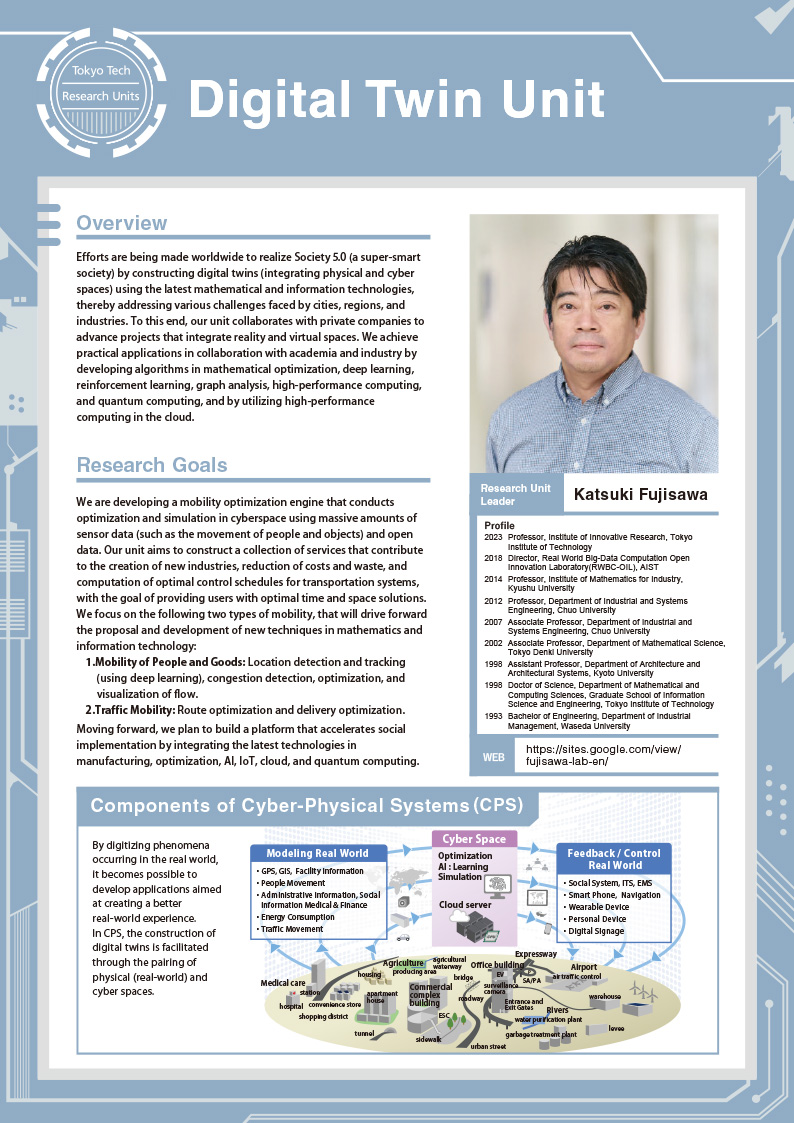
We achieve practical applications in collaboration with academia and industry by developing algorithms in mathematical optimization, deep learning, reinforcement learning, graph analysis, high-performance computing, and quantum computing, and by utilizing high-performance computing in the cloud.
Laboratory List
Leaflet
Digital Twin Unit
-
Sustainable Chemical Resource Production Unit
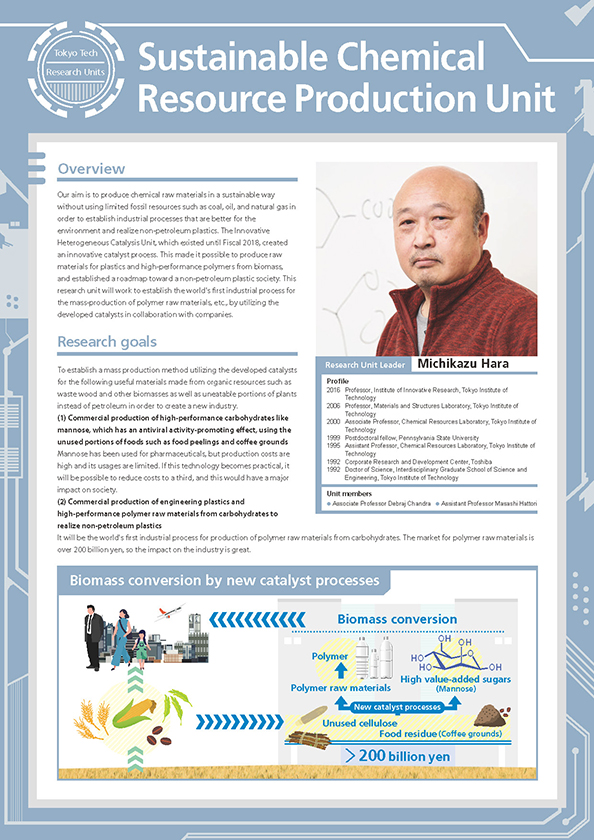
Our aim is to produce chemical raw materials in a sustainable way without using limited fossil resources such as coal, oil, and natural gas in order to establish industrial processes that are better for the environment and realize non-petroleum plastics. The Innovative Heterogeneous Catalysis Unit, which existed until Fiscal 2018, created an innovative catalyst process. This made it possible to produce raw materials for plastics and high-performance polymers from biomass, and established a roadmap toward a non-petroleum plastic society. This research unit will work to establish the world's first industrial process for the mass-production of polymer raw materials, etc., by utilizing the developed catalysts in collaboration with companies.
-
Advanced Data Analysis and Modeling Unit
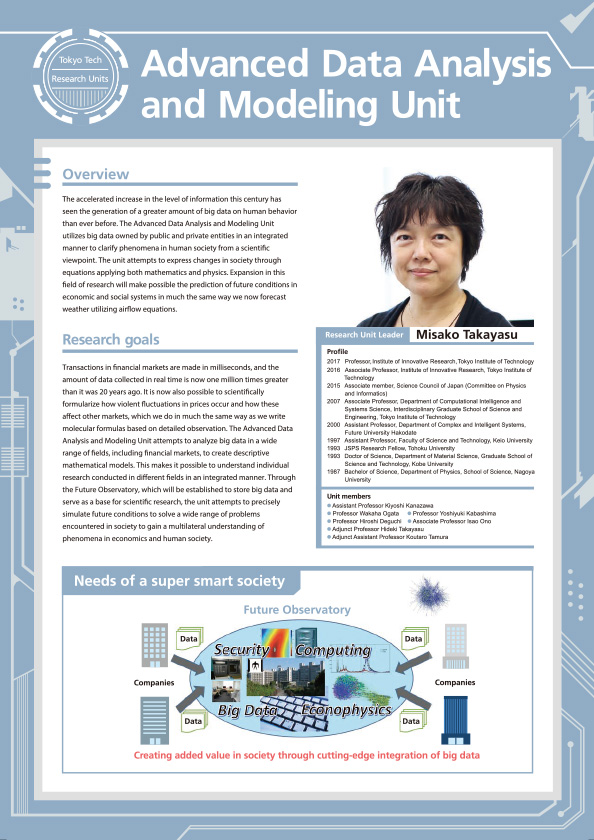
Our society is facing various problems expected to be solved by utilizing big data. This research unit, establishes solutions for these problems by following the three scientific steps applying the concepts and methods in physics: advanced analysis of synthesized big data, multilayered space-time modeling, and large-scale numerical simulations.
-
Quantum Computing Unit
2018.7.1 - 2022.3.31
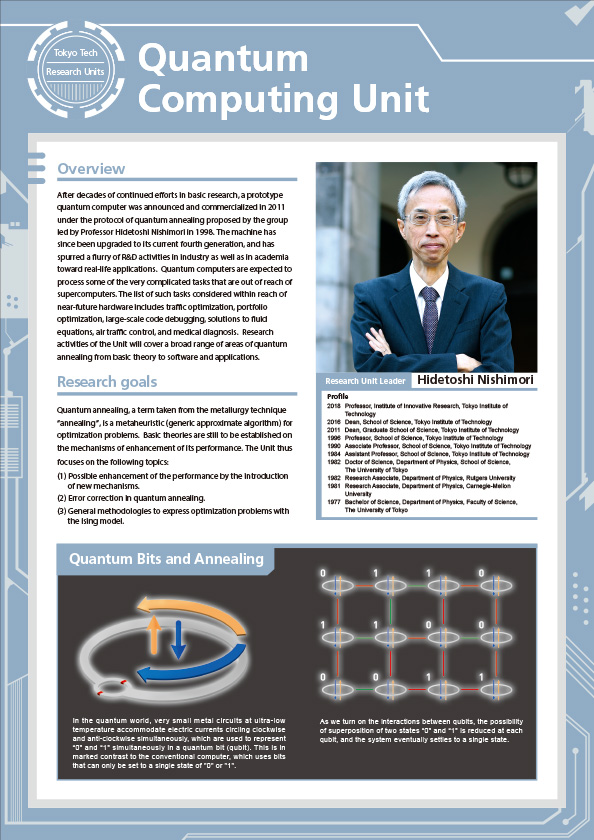
The Quantum Computing Unit engages in a broad range of research topics, from the establishment of basic theories in quantum annealing to societal applications. The unit strives to establish itself as the primary location for quantum annealing research in Japan.
-
All Solid-state Battery Unit
2018.3.1 - 2021.3.31
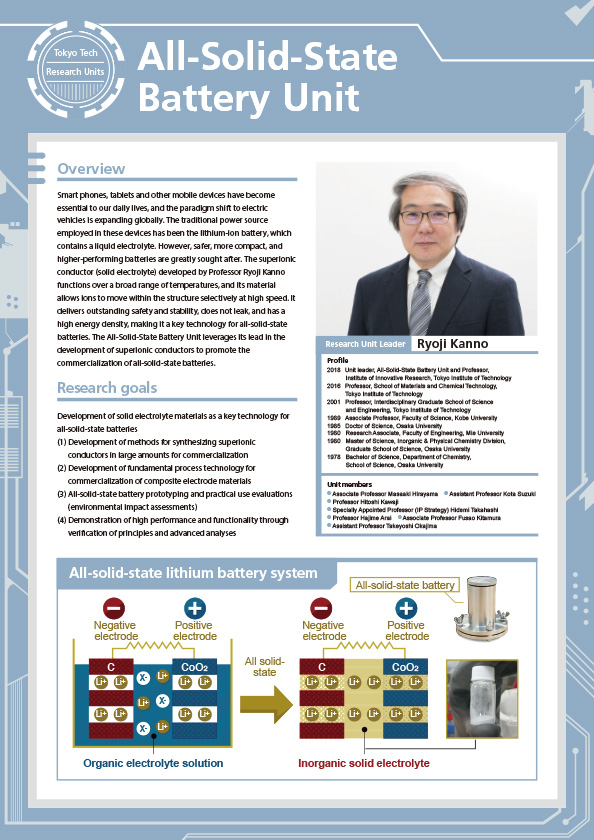
Smart phones, tablets and other mobile devices have become essential to our daily lives, and the paradigm shift to electric vehicles is expanding globally. The traditional power source employed in these devices has been the lithium-ion battery, which contains a liquid electrolyte. However, safer, more compact, and higher-performing batteries are greatly sought after. The superionic conductor (solid electrolyte) developed by Professor Ryoji Kanno functions over a broad range of temperatures, and its material allows ions to move within the structure selectively at high speed. It delivers outstanding safety and stability, does not leak, and has a high energy density, making it a key technology for all-solid-state batteries. The All-Solid-State Battery Unit leverages its lead in the development of superionic conductors to promote the commercialization of all-solid-state batteries.
-
Global Hydrogen Energy Unit
2016.4.1 - 2021.3.31
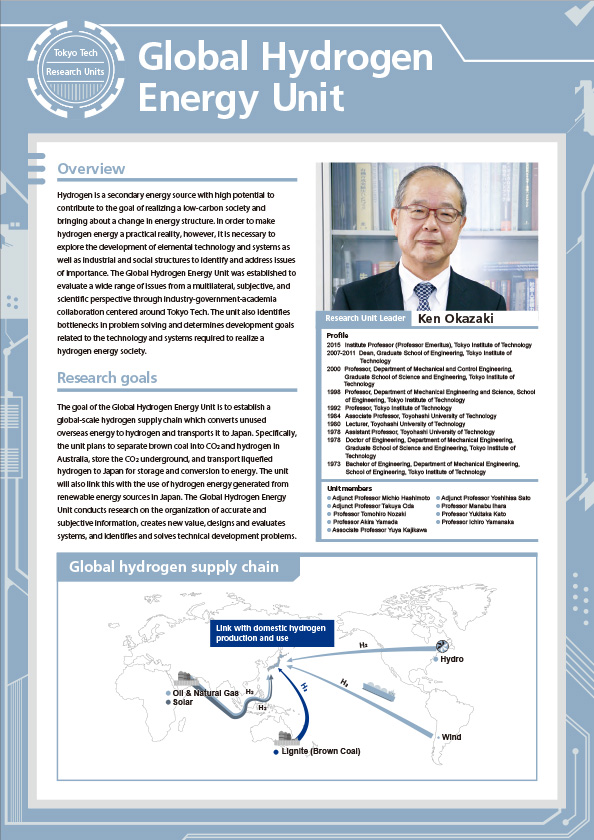
This unit investigates the implementation and technological development of a global-scale CO2-free hydrogen supply chain combined with the domestic hydrogen network, with collaboration between academia, industry, and government, aiming to realize a “best mix” of global and diverse energy resources.
-
Innovative Heterogeneous Catalysis Unit
2016.4.1 - 2019.3.31
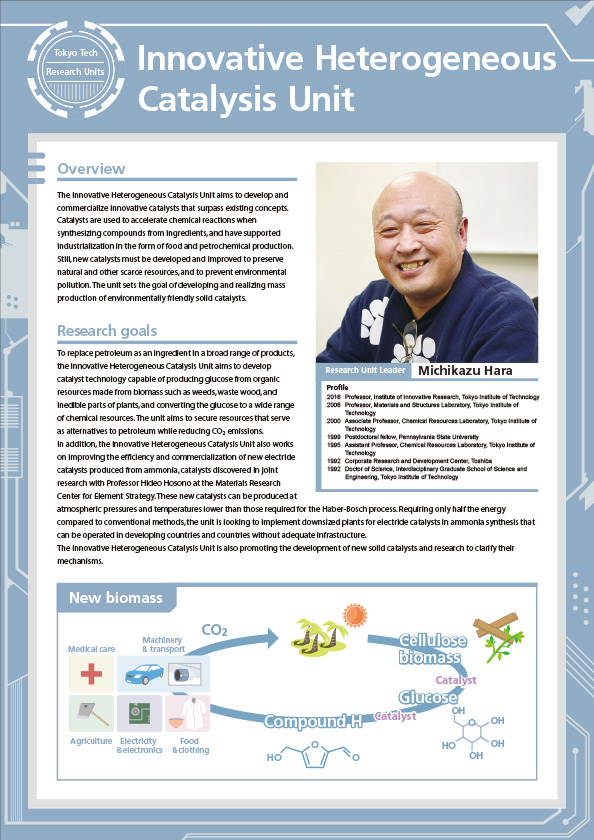
The development of various catalysts in the past, has resulted in the production of a variety of essential chemicals, but serious problems not solved by such catalysts still remain. The aim of this unit is to solve such problems by creating new heterogeneous catalysts.(PI: Michikazu Hara)
-
Clean Environment Unit
2016.4.1 - 2019.3.31
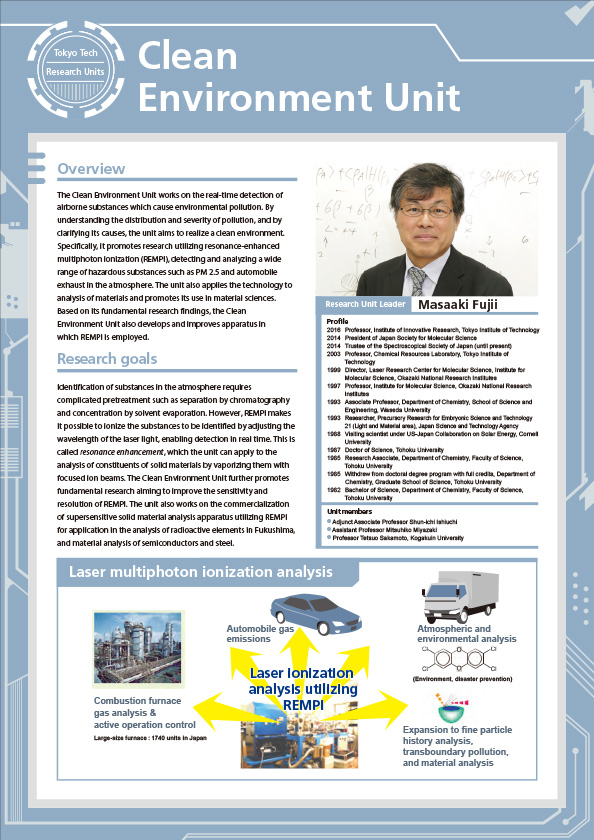
This unit is developing various methods to evaluate environmental risks which threaten, a safe and secure society. Advanced methods to monitor chemical components in exhaust gas from vehicles and incinerators in real time and an analyzer which reveals the origin and migration path ofsuspended particulate matter (SPM) have already been developed.(PI: Masaaki Fujii)
-
Advanced Nuclear Fuel Cycle Unit
2016.4.1 - 2019.3.31
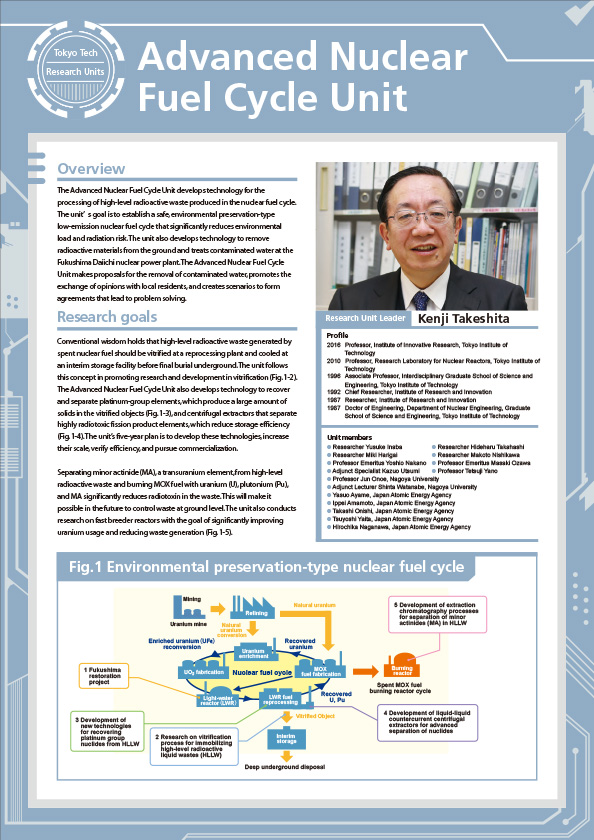
The Nuclear Fuel Cycle Research Unit develops eco-friendly nuclear fuel cycle and nuclear wastes disposal technology featuring high safety and low emission of nuclear wastes. These technologies contribute to the early suppression of global warming, future energy security and decommissioning of the Fukushima Daiichi Nuclear Reactors.(PI: Kenji Takeshita)
-
Advanced Computational Drug Discovery Unit
2016.4.1 - 2020.3.31
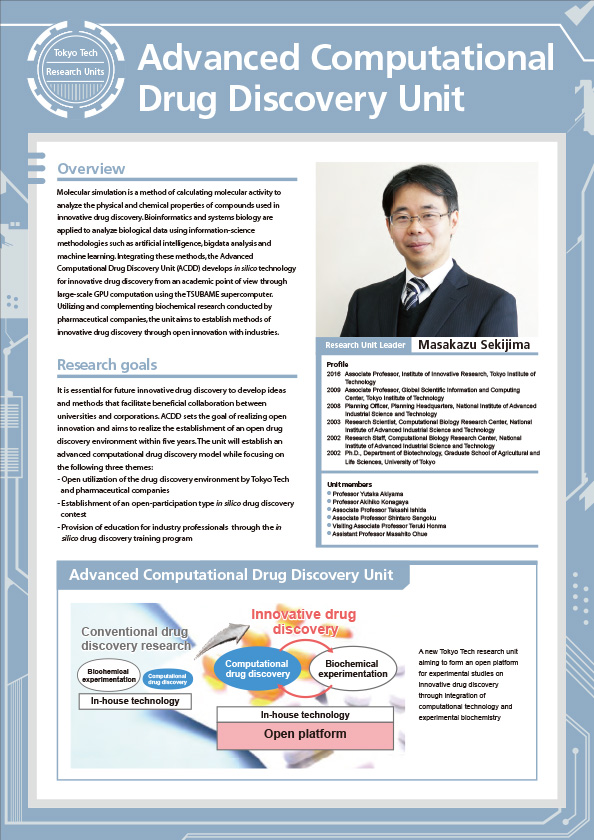
objective of this unit is to build an academic open innovative drug discovery platform with industry by integrating biochemical experimentation with computer-aided drug discovery. Our tools include molecular simulation, machine learning, and bioinformatics through the utilization of Tokyo Tech’s world class GPU-powered TSUBAME supercomputer.(PI: Masakazu Sekijima)


